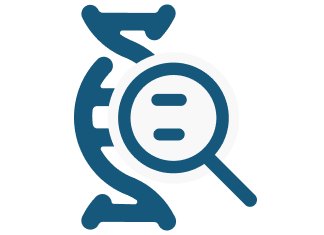Uncommon conditions, uncommon challenges
Whether you have just found out that your child has a rare genetic condition, or you or your family are already living with the challenges that such conditions can present, this site can give you quick access to accurate, supportive information.
In this section, you can learn about the importance of early diagnosis, and the focus of Sarepta research.
Diagnosis: the earlier the better
People with rare conditions often see long delays in the time it takes to receive an accurate diagnosis. They must navigate a maze of tests, visits to different specialists, hospital stays, and systemic barriers to healthcare.
The impact of this delay can be significant for people who are trying to find answers. Not having a diagnosis can make one feel alone, confused, frustrated, and without support. The toll is not only on physical health, but on mental health and financial stability as well.
Overcoming these challenges and getting an early diagnosis is essential in order for care providers to create an effective strategy for treatment. Genetic testing is one key path to an accurate diagnosis. Some examples of how genetic testing may help:
- a timely, accurate diagnosis
- early formation of a care team that spans different medical specialties
- timely genetic counseling with information about the condition and family planning
- finding out about treatments
- learning about eligibility for clinical trials
- access to patient support and advocacy networks
- avoiding unnecessary, invasive, and expensive diagnostic testing
The average time from the start of symptoms to a rare condition diagnosis is between 6 and 9 years.
How does genetic testing work?
Some rare conditions are identified or confirmed through genetic testing. A genetic test uses a sample you or your child provides—usually blood or saliva. The sample is sent to a lab where tests can determine whether genes have been changed or damaged. This information will be reviewed with you and can help your doctor:
- determine which specialists you should see
- explain which treatments are approved or are being studied
- recommend any additional healthcare options you could consider, such as physical therapy
There are 3 companies that offer sponsored no-charge genetic testing to eligible individuals in the United States who may have one of the several types of muscular dystrophy. Visit these sites to learn more about what tests are available, and how to qualify.
- Invitae offers the Detect Muscular Dystrophy (Detect MD) Program. Available to U.S. residents, the program offers a range of no-charge tests for muscular dystrophy, neuromuscular disorders, and LGMDs. Tests can only be ordered by healthcare providers.
- Parent Project Muscular Dystrophy (Decode Duchenne) sponsors no-charge genetic testing for Duchenne muscular dystrophy. Test can be ordered by healthcare providers.
- Revvity Omics (formerly PerkinElmer) sponsors The Lantern Project for a broad range of rare diseases including people suspected of having an LGMD. This program includes a focused neuromuscular panel of tests for known LGMD genes. Tests can only be ordered by healthcare providers.


Screening at birth: it’s never too early
In the United States, infants are screened for many disorders at birth. Each state decides which conditions are included in its newborn screening panels. Conditions are only included if they meet certain standards, including having an effective treatment and an available test to identify the condition. A blood test may spot such conditions early, helping families to take action before symptoms develop.
The federal Recommended Uniform Screening Panel (RUSP) is a list of conditions that are recommended for newborn screening in the U.S. Its purpose is to ensure that all newborns are screened for conditions that could have serious health consequences but also have available treatments. This means there can be better chances for earlier treatment that has the potential to affect long-term outcomes.
See what tests are given to newborns in your state.
Get involved, create results: You can help decision-makers understand the impact that rare conditions may have on families, and how early detection might make a life-changing—and life-saving—difference.
Your involvement may include:
- supporting the nomination of a disorder for inclusion in the RUSP
- building awareness about the importance of newborn screening through advocacy
- participating in clinical and natural history studies
- networking with and supporting other families
Visit these sites to learn more about early diagnosis and genetic testing, and how you can work with a genetic counselor. If genetic testing has already been performed, you can request a copy of the genetic testing report to help with discussions with additional healthcare providers.
Two rare conditions we are working on today
Sarepta is committed to investigating new therapies for complex, rare, genetic disorders.
